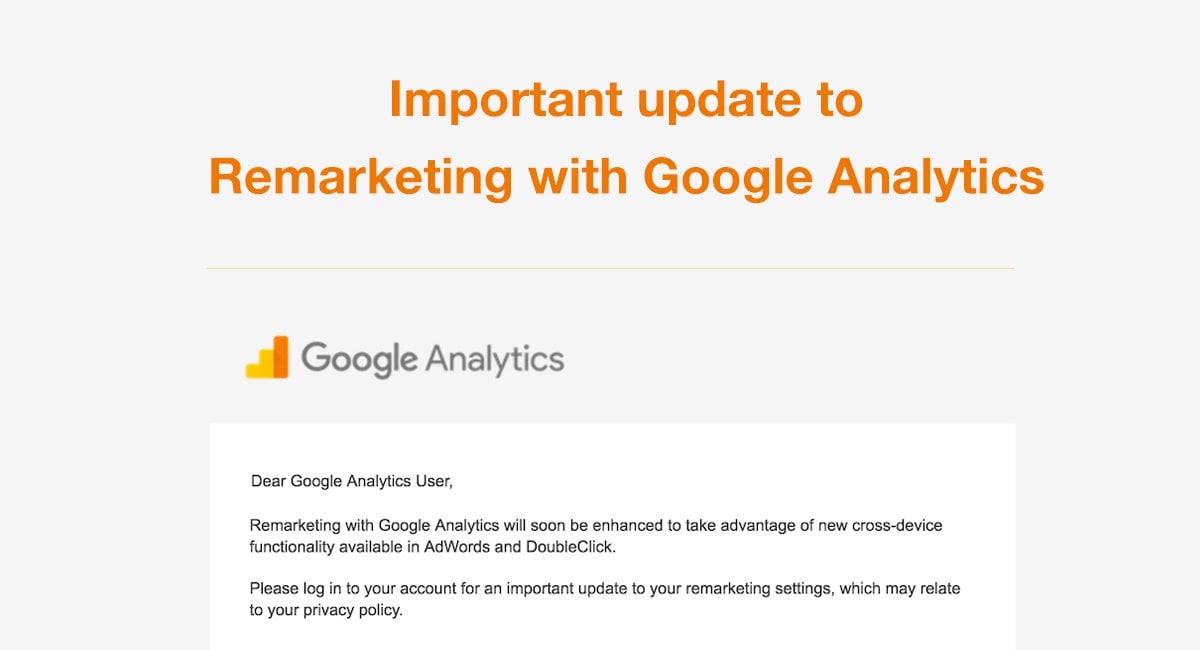Utilizing Remarketing in Google Analytics: A Comprehensive Overview
Utilizing remarketing in Google Analytics uses businesses a calculated side in reaching out to possible clients. The ability to target people who have actually currently engaged with your website provides an unique possibility for tailored marketing initiatives. By recognizing how to craft audience listings and deploy them properly, organizations can considerably enhance their conversion prices. The ins and outs of establishing up and optimizing remarketing campaigns need a thorough understanding of target market division and performance evaluation. This guide will shed light on the essential actions associated with using the full potential of remarketing in Google Analytics, causing boosted advertising results.
Understanding Remarketing in Google Analytics
Remarketing in Google Analytics enables businesses to purposefully target individuals who have previously communicated with their website or mobile app. By leveraging data from Google Analytics, services can create personalized remarketing checklists based upon individual actions, such as pages visited, activities taken, or specific goals attained. This powerful tool allows companies to re-engage with individuals who have revealed interest in their products or services, inevitably raising the chance of conversion.
Comprehending the different kinds of remarketing strategies is vital for an effective campaign - What Is “Remarketing” In Google Analytics?. Google Analytics offers various choices, consisting of typical remarketing, vibrant remarketing, and remarketing lists for search ads (RLSA) Each kind offers an unique purpose and can be customized to meet specific marketing goals
Moreover, assessing the efficiency of remarketing campaigns is essential for enhancing outcomes. Google Analytics provides valuable understandings right into the performance of different remarketing techniques, allowing businesses to make data-driven choices and improve their targeting technique. By continuously monitoring and adjusting remarketing efforts based upon analytics information, companies can make the most of ROI and drive success in their advertising efforts.
Establishing Up Remarketing Campaigns

After setting up audience lists, the following step is to link Google Analytics with Google Advertisements. By connecting these two systems, organizations can perfectly move audience listings from Google Analytics to Google Advertisements for remarketing functions. This combination enables even more precise targeting and far better campaign performance.
Once the accounts are connected, businesses can develop remarketing campaigns in Google Advertisements making use of the target market notes formerly defined in Google Analytics. These campaigns can be personalized with specific advertisement creatives, messaging, and bidding process strategies to properly re-engage with past site visitors and drive conversions. By following these steps, organizations can take advantage of the power of remarketing to boost their advertising and marketing efforts and boost ROI.
Utilizing Target Market Division Methods

Predefined sections in Google Analytics enable you to quickly evaluate usual target market groups like brand-new customers, returning individuals, or customers that finished a particular goal on your web site. Customized sectors, on the various other hand, enable you to develop one-of-a-kind sectors based on details criteria that are necessary to your organization goals. Dynamic remarketing checklists immediately adjust based on individual behavior, showing tailored ads to individuals that have actually connected with your site particularly ways.
Analyzing Remarketing Performance Metrics
Upon assessing the efficiency of remarketing campaigns in Google Analytics, the evaluation of key efficiency metrics gives useful understandings into audience interaction and conversion prices. By delving right into metrics such as click-through prices (CTR), conversion rates, expense per purchase (CERTIFIED PUBLIC ACCOUNTANT), and return on ad spend (ROAS), marketing professionals can evaluate the success of their remarketing initiatives. CTR shows the percentage of individuals who clicked on the ad after seeing it, mirroring the advertisement's importance and charm. Conversion rates measure the percent of customers that completed a desired activity, such as making a purchase, after clicking the ad. CPA discloses the typical cost incurred for each and every conversion, aiding assess campaign earnings. ROAS, on the various other hand, measures the revenue created for each dollar invested in advertising and marketing. Assessing these metrics allows marketing professionals to optimize projects, refine audience targeting, and allot spending plans successfully to boost general remarketing performance.
Maximizing Remarketing Techniques
When refining remarketing methods in Google Analytics, focusing on target market division is paramount for achieving project success. By dividing your audience right into details sections based upon their actions, demographics, or this content rate of interests, you can tailor your ads better to every team. This targeted technique raises the possibility of engaging customers that have actually already revealed interest in your services or products, causing higher conversion prices.
An additional important aspect of maximizing remarketing approaches is continually screening and refining your projects (What Is “Remarketing” In Google Analytics?). A/B screening different advertisement creatives, messaging, or offers can help you identify what reverberates best with your audience and drives the most conversions. By assessing the performance of these examinations in Google Analytics, you can make data-driven decisions to optimize your remarketing initiatives further
Furthermore, leveraging dynamic remarketing can dramatically boost your campaign results. This function allows you to show customized ads to users based upon their past communications with your web site, showcasing solutions or items they have previously watched. By supplying tailored content to users based upon their actions and rate of interests, dynamic remarketing can help hop over to these guys raise interaction and drive conversions.
Final Thought
To conclude, taking advantage of remarketing in Google Analytics is a critical approach to target customers who have actually formerly involved with a web site. By creating customized audience listings and making use of audience segmentation strategies, companies can enhance remarketing projects for boosted conversion rates. Evaluating efficiency metrics and continuously maximizing methods are crucial for taking full advantage of the efficiency of remarketing initiatives.
Google Analytics supplies numerous alternatives, including conventional remarketing, vibrant remarketing, and remarketing lists for search advertisements (RLSA)After establishing up target market listings, the following step is to link Google Analytics with Google Ads. By linking these two systems, services can flawlessly transfer audience listings from Google Analytics to Google Advertisements for remarketing purposes.Once the accounts are more connected, businesses can develop remarketing projects in Google Ads using the target market details previously specified in Google Analytics.When refining remarketing methods in Google Analytics, concentrating on audience division is extremely important for achieving project success.